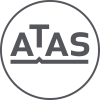Belinda MacFarlane
Senior Travel Specialist - italktravel Narre Warren
Shop 2086, Westfield Fountain Gate, Narre Warren
03 9705 7777
Kyoto Transportation
Kyoto is a city where you can find taxis at every corner, It is therefore quite easy to catch one at any hour of day or night. You know if a taxi is free by looking at the light next to the driver, red is free and blue or green is taken.
Even if the rates of the different companies are more or less the same (about 640 yen for the first 2 km), the MK or Yasaka (with a clover) taxis are slightly less expensive. It will cost you around 1 100 yen to go from Kyoto station to Gion, 1 300 yen from Gion to the Silver Pavillion and 2 000 yen from there to the Golden Pavillion.
Practical tip: an address is not always clear enough information for taxi drivers, and it is easier to give the driver information like the name of a main intersection or of a famous restaurant. The doors in taxis open and close automatically, so don't worry about leaving the door open when getting out.
Bus
Kyoto has a very good bus network that will allow you to go everywhere in the city easily. They usually run between 6AM and 10:30PM. Get on by the middle or back door and get off at the front. You will need to pay upon alighting. The rate within the city (except for Arashiyama) is 230 yen (120 yen for children from 6 to 12). You are supposed to give the exact change, but if you don't have it you can also use the machine next to the driver in order to get some.
The 'City Bus All-day Pass' for 500 yen (half for children) that you can get in the ticket machines at bus stations or in the bus itself, will allow you to travel as much as you want within the city for a full day.
Subway
The subway network in Kyoto has 2 lines: the KARASUMA line from North to South and the TOZAI line from east to west. These lines intersect at the 'Karasuma Oike' station.
The price varies from 210 to 350 yen for adult and from 110 to 180 yen for children, depending on the destination.
This network can seem quite small and is indeed not designed for visiting the city, except if you want to reach attractions located close to the city center like the Imperial Palace, the Manga museum or Nijo Castle.
Please note that the Japan Rail Pass is not valid in Kyoto's subway.
Bullet Train
The Shinkansen stops at the JR Kyoto station. From there other JR lines start, like the Sagano line to Arashiyama and the Nara line to the South serving the Fushimi Inari and Byodoin.
Private railways cannot be used with the Japan Rail Pass and are not connected to the JR Kyoto station. However they can be good options for some of your trips:
The Hankyu line, that links Kyoto and Osaka, leaves from Kawaramachi Shijo, in the city center and serves the Katsura Villa (10 minutes - 190 yens), near Saiho-ji (Moss garden) and Arashiyama (20 minutes - 220 yens).
The Keihan line, that runs along the Kamo river from Demachiyanagi station, serves the East side of Kyoto and is an alternative to the JR Nara line to reach Fushimi Inari.
Other lines exists like the Keifuku, Eizan, and Kintetsu lines.
Bikes & On Foot
The last few years have seen an increase in the number of bike rental stores in Kyoto. It proves that the bike is the best way to visit Kyoto at your own pace. The city is almost flat, and riding along the river is a delight.
On the North-East side of Kyoto, along the river, there is a bike rental store called Carillon that offers competitive prices (500 yens for a day, 750 yen for 24h, 2 000 yen for a week, 2 500 yen for 2 weeks).
Be careful, it is forbidden to park in the streets around to the train stations and in the city centre. Parking patrols pass several times a week to tow bikes parked in unauthorized areas. Make sure to park your bike in designated parking area (about 150 yens for 8 hours).
For walking enthusiasts, it is quite easy to visit the East side of the city and the centre with good shoes.




